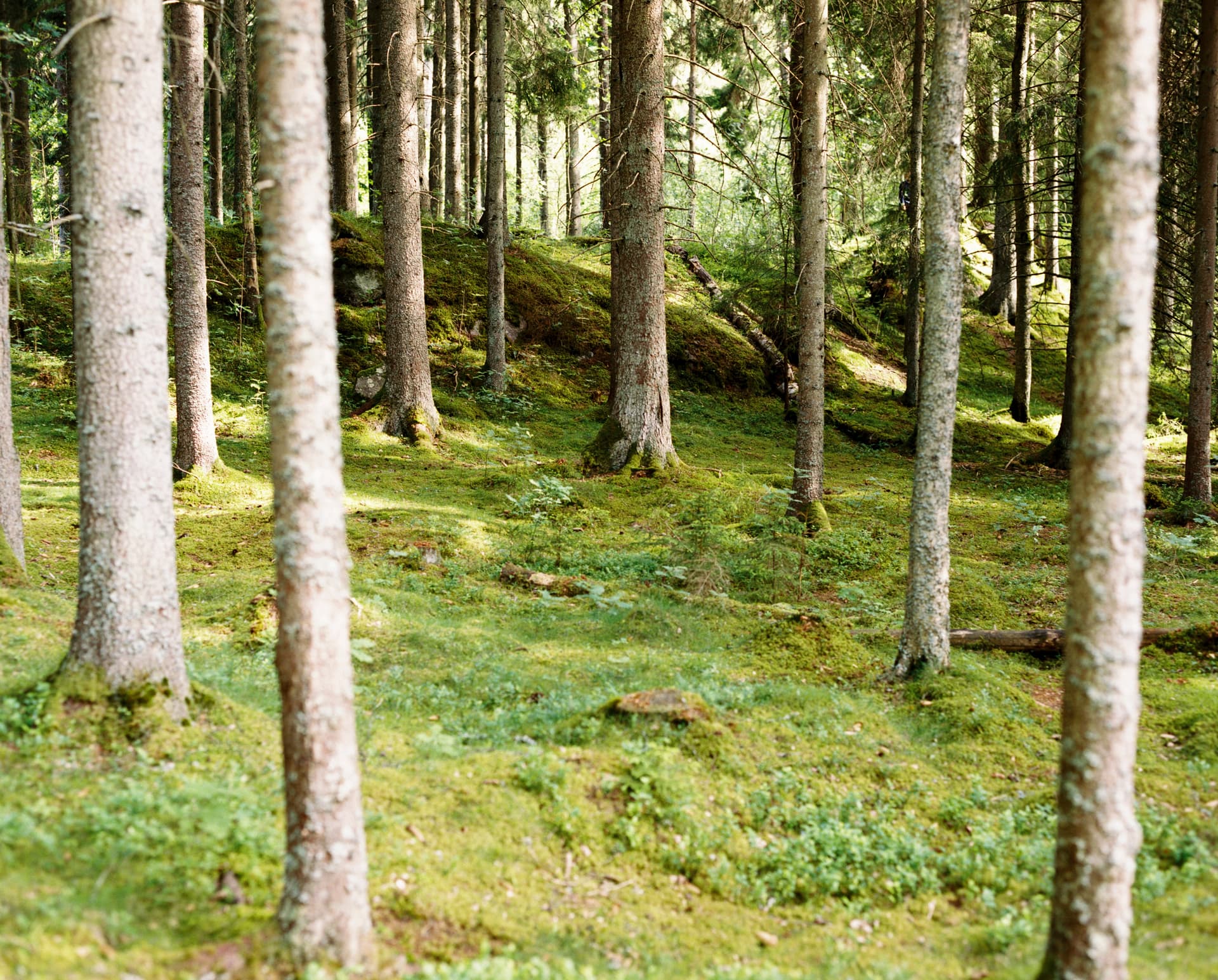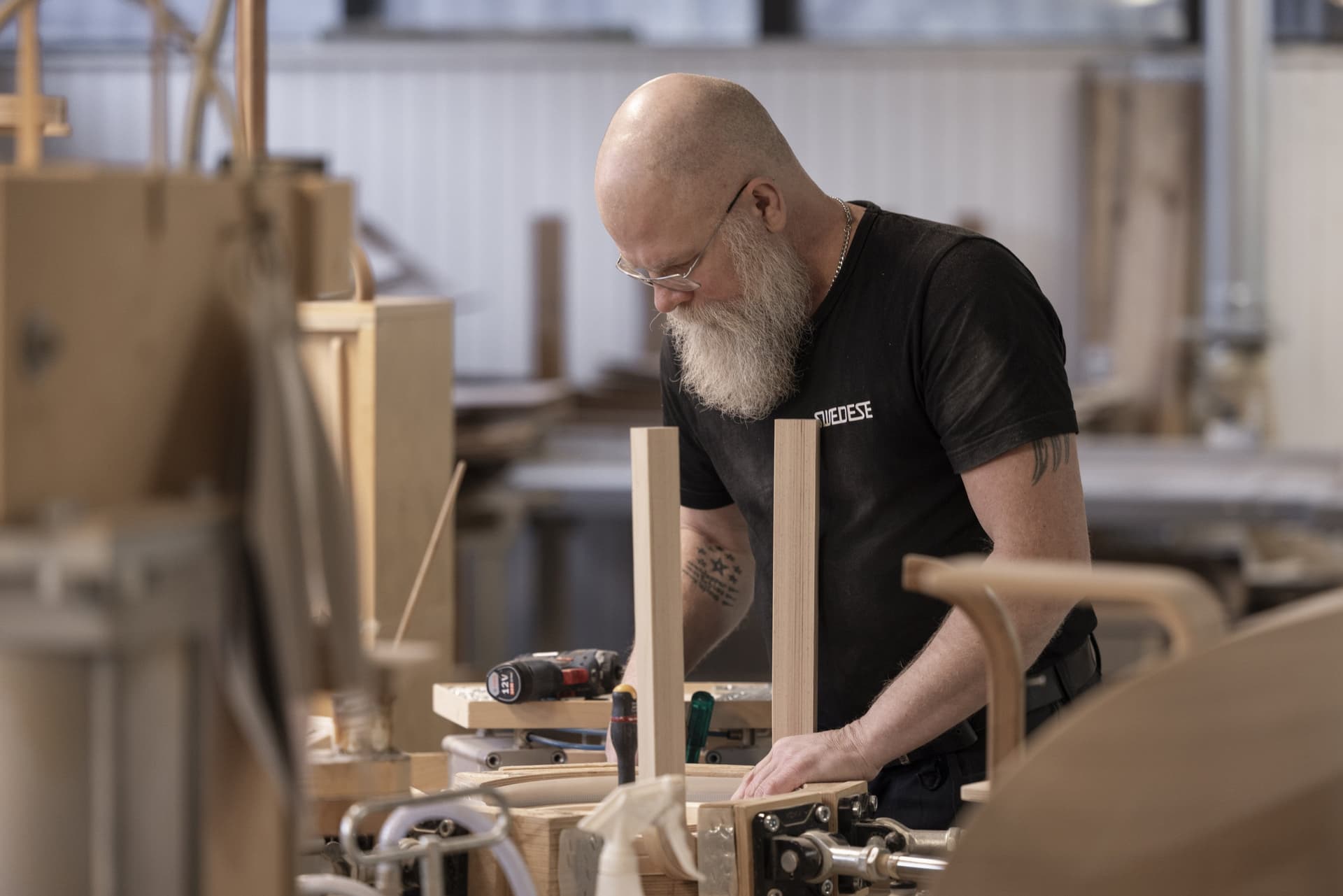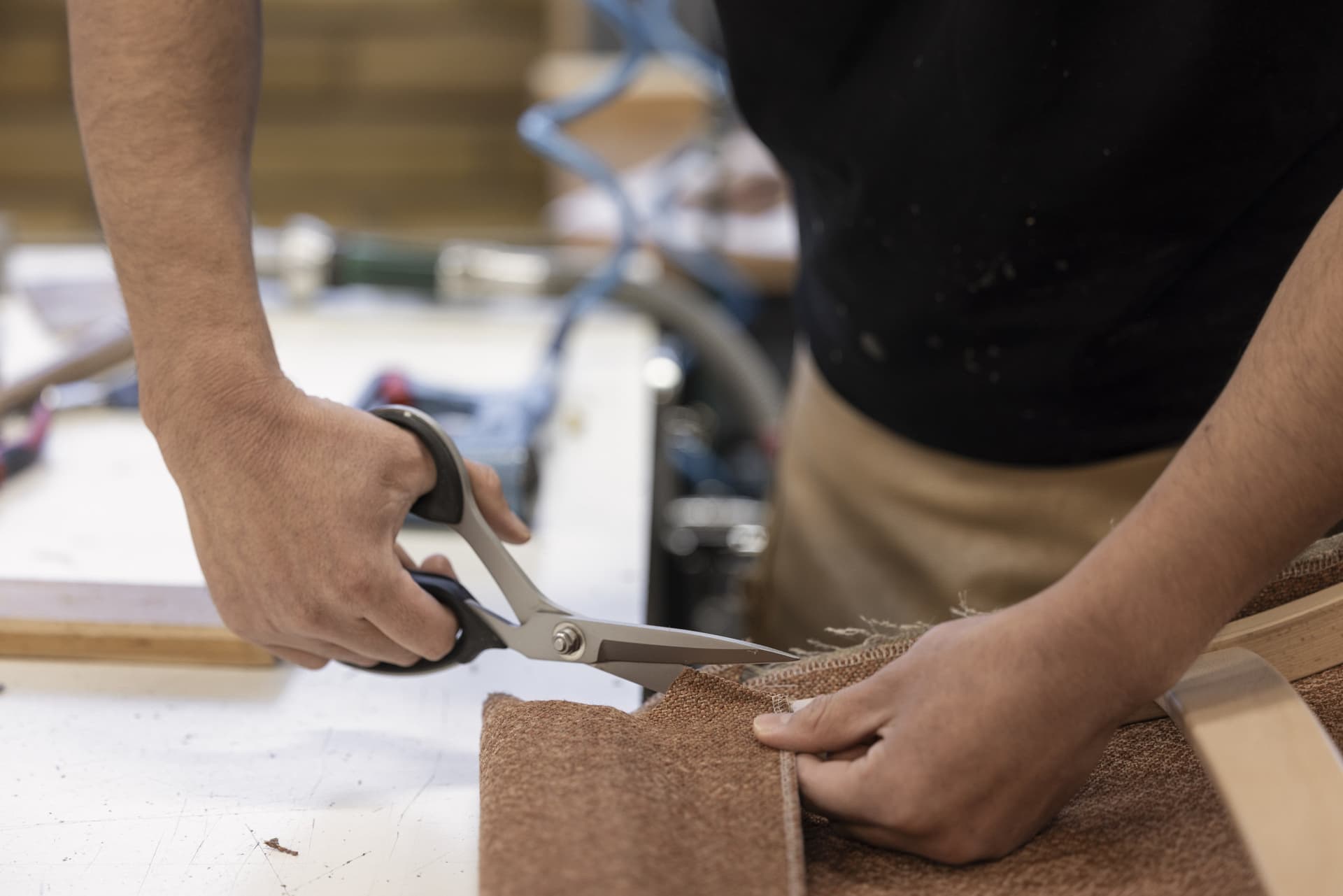Operations, recycling, and transport
Reducing our climate impact

Our Småland heritage is evident even when it comes to waste and scraps. With solid knowledge of the properties of our materials and how to process them, we plan our operations to keep waste to an absolute minimum.
Climate-neutral production
Swedese’s manufacturing is located in Småland, Sweden, and we are very proud that the operation of our production is climate-neutral. We have two production facilities: in Vaggeryd, we carry out woodworking, surface treatment, and upholstery, while in Äng, we handle sewing and upholstering of upholstered furniture. Since 2017, both facilities have been powered by climate-neutral electricity. For heating, Äng has used geothermal energy since 2014, and Vaggeryd has used district heating based on local biofuels since 2017. All electricity consumption at our facilities has been fossil-free since 2017.
Transport
Most of our suppliers are located in southern Sweden, which helps keep climate-impacting transport to a minimum. Polyether is sourced from Sweden or Denmark, while veneer comes from Germany, Poland, or the Czech Republic, depending on the wood type. Sheepskin is supplied by our Swedish partners, who in turn source it from Australia, New Zealand, or Sweden.
One challenge regarding transport to and from customers is the availability of fossil-free options. Most of our deliveries are handled by Swedish logistics companies, with additional shipments to Norway and the UK. Finding cost-effective transport providers with fossil-free vehicles remains a challenge, but we are committed to continuing our work toward sustainable transport.
Our company cars are currently mostly hybrid vehicles.
Waste and Recycling
Our Småland heritage is evident even in how we handle waste and material scrap. With solid knowledge of material properties and processing methods, we plan our operations to minimize waste.
We work on reuse and finding new applications in several ways. Finished furniture with minor defects is sold through our factory outlet. Scrap materials, such as defective wood pieces and sheepskin, are collected and donated to preschools and schools for use as educational materials. This is done continuously, primarily through our partner ReMida.
Materials that cannot be reused are sorted and categorized as different types of waste. Monitoring the shares of different waste types is an important key performance indicator in our continuous improvement efforts. The type of waste depends on factors such as product mix and the materials used.
Energy recovery: Our largest waste category, mainly consisting of wood components.
Recycling: Includes metals, corrugated cardboard, plastics, and textile waste.
Process water: Contains water and glue from veneer pressing and cleaning of coating equipment.
Landfill: A very small fraction, which may include glass, porcelain, and construction waste.
Hazardous waste: Can include batteries, fluorescent lamps, and process water from cleaning acid-cured coatings.
Over time, we have increased the share of waste sent for recycling, and our ambition is to continue increasing it.




